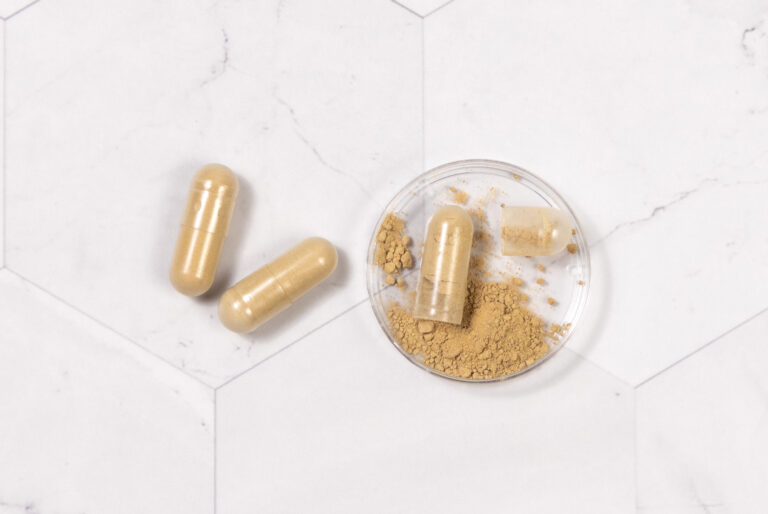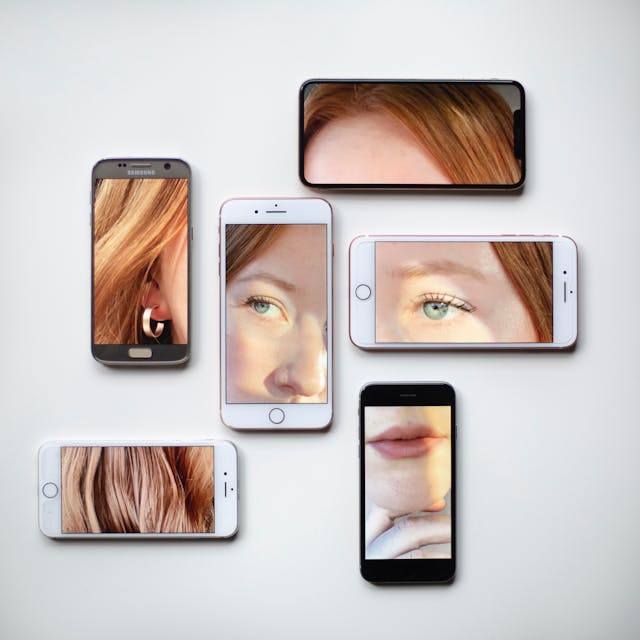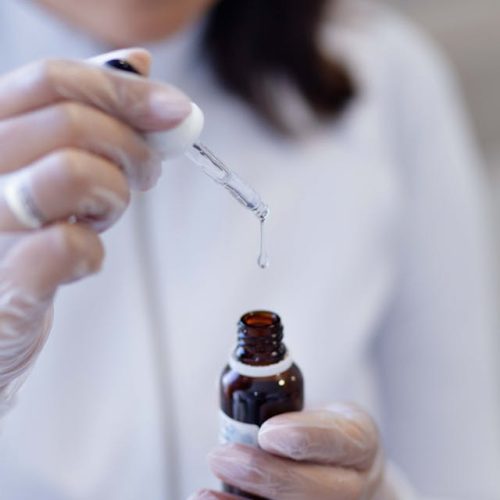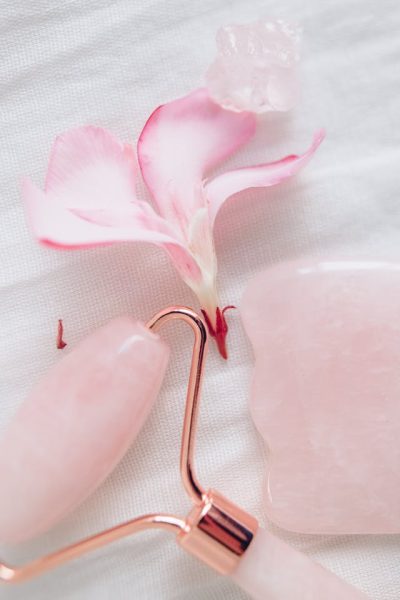Emerging Beauty Trends in 2025: What's Next in Wellness & Skincare?
The beauty universe is in constant evolution, and 2025 promises to be a revolutionary year for the sector. The Beauty Trends of 2025 are redefining not only the products we use but also how we understand the concept of self-care. A deep dive into future beauty innovations and wellness practices reveals that we are on the threshold of a new era where technology, sustainability, and mental health intertwine in surprising ways. This article explores the emerging trends that are shaping the future of wellness and skincare, offering valuable insights for those who wish to stay ahead in innovative beauty practices.
As we explore the Beauty Trends of 2025, we will see how the industry is moving away from generic solutions and embracing personalized approaches that consider each person’s individuality. The era of “one-size-fits-all” products is falling behind, giving way to a new perspective that respects diversity and the specific needs of different skin types, ethnic backgrounds, and personal beauty concerns.
Biometric Technology in Care Personalization
The technological revolution has finally reached the beauty sector in its full potential. In 2025, home biometric devices have become accessible and sophisticated, allowing detailed skin analyses without the need for office visits. These gadgets use advanced sensors to measure hydration, oiliness, elasticity, and even cellular stress markers, offering extremely precise and personalized recommendations.
The applications that synchronize with these devices create an intelligent beauty ecosystem, monitoring product effectiveness over time and adjusting recommendations based on real results. This data-driven approach to skincare represents one of the most transformative Beauty Trends, as it eliminates the waste of time and money on inadequate products.
Innovative brands are launching product series that work in conjunction with these devices, allowing adjustments in formulations according to biometric readings. This level of personalization was unthinkable just a few years ago, but now defines the standard for premium beauty experiences. Technology not only facilitates better choices but democratizes access to professional-quality skin analyses.
Neurocosmetics: The Science of Sensory Well-Being
One of the most fascinating Beauty Trends of 2025 is the rise of neurocosmetics, a field that studies how cosmetic ingredients affect not only the appearance of the skin, but also our mental and emotional state. Neurocosmetics are formulated to activate specific sensory receptors, triggering positive responses in the brain during use.
These products go far beyond the traditional concept of aromatherapy. Textures that change during application, fragrances that adapt to the skin’s pH, and active ingredients that stimulate the release of neurotransmitters such as serotonin and dopamine transform the skincare routine into a multi-sensory experience that promotes deep relaxation and stress reduction.
Recent research shows that chronic stress significantly accelerates skin aging.
Therefore, brands are investing heavily in developing products that work on both appearance and mental well-being. In an increasingly anxious world, neurocosmetics represents a holistic approach that recognizes the inseparable connection between mind and body.
The sensory nature of products has become as important as their effectiveness, with clinical evaluations measuring not only physical results but also emotional responses and stress levels. Beauty Trends like this show how the industry is embracing a more complete and sophisticated vision of beauty.
Facial Microbiome: The New Paradigm of Skin Care
The skin microbiome – the ecosystem of trillions of microorganisms that inhabit our skin surface – has established itself as the center of attention in 2025. Advanced research has revealed that the diversity and balance of these microbial communities are essential not only for skin health, but for its appearance, texture, and regenerative capacity.
The Beauty Trends focused on the facial microbiome represent a fundamental shift in the skincare approach. Instead of aggressive products that promise to “deep clean,” we see the emergence of bioactive formulations that nourish beneficial bacteria and strengthen the skin’s natural barrier.
Video By Edward Jenner
Products containing prebiotics, probiotics, and postbiotics have become the new gold standard in facial care. Home testing kits for microbiome analysis allow consumers to identify specific imbalances in their skin flora, adopting personalized protocols to restore microbial harmony. Prestigious brands are launching complete series dedicated to different types of microbiomes, recognizing that human biological diversity requires equally diverse solutions.
This approach represents one of the most scientific and promising Beauty Trends, as it works with the natural biology of the skin rather than against it. Dermatologists report impressive results in treating conditions such as rosacea, acne, and atopic dermatitis using protocols focused on microbial rebalancing, often succeeding where conventional treatments fail.
Sustainable Beauty Trends: Regenerative Beauty on the Rise
Environmental awareness has reached a new level in 2025, with consumers demanding much more than simply “less harmful” products. Regenerative beauty – a concept proposing that beauty products should actively improve the environment – has become a dominant force in the market. This philosophy represents a natural evolution of sustainable Beauty Trends that began gaining momentum in the previous decade.
Leading brands now adopt practices such as regenerative agriculture for ingredient sourcing, packaging that sequesters carbon from the atmosphere, and biodegradable formulas that nourish aquatic ecosystems when discarded. Some innovative products contain microorganisms that purify water during their use cycle, transforming a simple cleansing ritual into an act of environmental restoration.
Transparent supply chains have become not just desirable, but essential for success. Consumers in 2025 have instant access to the exact origin of each ingredient through blockchain technologies and advanced QR codes, allowing purchasing decisions based on personal values and planetary impact.
The industry is witnessing the explosive growth of “beauty collectives” – cooperatives of natural ingredient producers who receive fair compensation and profit sharing. These initiatives not only ensure superior quality of botanical assets but also promote social justice and economic development in traditional agricultural communities around the world.
In 2025, AI has surpassed the role of a simple recommendation tool to become an always-available personalized beauty consultant. Sophisticated algorithms analyze thousands of variables – from local weather conditions to hormonal cycles and eating habits – to predict skin needs even before problems appear, representing one of the most innovative technological Beauty Trends.
Smart mirrors equipped with augmented reality allow users to virtually visualize products before purchase, analyzing how different formulations interact with the unique biochemistry of the skin over time. This technology drastically reduces waste and impulse purchases, making the product discovery journey more sustainable and efficient.
Virtual beauty assistants have evolved to understand contextual and cultural nuances, offering recommendations that respect specific skincare traditions and personal preferences. AI also allows smaller and independent brands to compete with industry giants, democratizing access to advanced analyses and personalized formulations.
AI-powered collaborative platforms aggregate feedback from millions of users with similar skin types, creating living databases that continuously refine recommendations and identify patterns imperceptible to human researchers. This collective approach to beauty research represents one of the most democratizing Beauty Trends of the decade.
Cellular Nutrition and Precise Adaptogenic Supplements

The line between nutrition and cosmetics continues to dissolve in 2025, with the emergence of beauty protocols that integrate precise oral supplements with synchronized topical products. Personalized cellular nutrition – based on genetic and metabolic analyses – allows for the creation of formulas that meet the specific needs of each individual, providing exact precursors for collagen, elastin, and ceramides that the skin requires.
Adaptogens – botanical compounds that help the body resist physiological and environmental stressors – have become central components in both supplements and topical products. Medicinal mushrooms such as reishi and cordyceps, traditionally used in Asian medicines, are now incorporated into advanced cosmetic formulations that strengthen the skin’s ability to face aggressions like urban pollution and blue light.
These nutritional Beauty Trends are supported by research confirming the superior efficacy of approaches that act simultaneously from within and from the outside. Dermatologists now routinely prescribe combined protocols that include dietary adjustments, strategic supplementation, and specific topical products, working together for optimized results.
Advanced encapsulation technology allows nutrients to be released at specific times of the day, synchronizing with the skin’s natural circadian rhythms. Night supplements, for example, provide precursors for regenerative processes that occur during sleep, while morning formulas prepare the skin to face daytime stressors.
Ancient Beauty Rituals Reimagined with Modern Science
One of the most significant Beauty Trends of 2025 is the revaluation of traditional beauty practices from ancestral cultures, now validated and enhanced by modern scientific methodologies. Techniques such as gua sha, facial acupressure, and Ayurvedic massages have received renewed attention after clinical studies confirmed their benefits for lymphatic circulation, muscle tone, and overall skin health.
Innovative brands are collaborating with traditional practitioners to develop tools and products that honor ancestral wisdom while incorporating technological advances. Gua sha stones with micropulsations, for example, enhance the benefits of the traditional Chinese technique, while facial oils based on Ayurvedic formulas are improved with cutting-edge peptide delivery systems.
Holistic beauty rituals that consider factors such as sleep quality, stress management, and breathing practices have gained legitimacy in the mainstream, as science confirms the profound connection between internal well-being and external beauty.
Beauty applications now include guidance for these complementary practices, recognizing that the best results come from truly integrated approaches. Holistic beauty rituals that consider factors such as sleep quality, stress management, and breathing practices have gained legitimacy in the mainstream, as science confirms the profound connection between internal well-being and external beauty. Beauty applications now include guidance for these complementary practices, recognizing that the best results come from truly integrated approaches.
This fusion between tradition and innovation represents not just an aesthetic trend, but a significant cultural movement that honors the accumulated wisdom of diverse civilizations. By scientifically validating these practices, the beauty industry helps preserve valuable knowledge that might otherwise be lost to time, while creating new Beauty Trends that connect past and future.
Exposomic Skin: Protection Against Complex Environmental Factors
The concept of “exposome” – the totality of environmental exposures that affect human health throughout life – has become central to advanced skincare in 2025. Anti-exposome products represent one of the most sophisticated Beauty Trends of the moment, offering comprehensive protection against a spectrum of aggressors that goes far beyond traditional UV rays.
Multifunctional formulations now defend the skin against atmospheric pollution, blue light from digital devices, electromagnetic waves, climatic stressors, and even potentially harmful substances in drinking water. These solutions utilize intelligent antioxidant complexes that adapt to the specific stressors present in the user’s environment.
Discreet wearable sensors monitor environmental exposures in real-time, communicating with applications that suggest adjustments to skincare routines as needed. On days of high pollution, for example, the app may recommend products with higher concentrations of detoxifying ingredients, while in periods of low humidity, it prioritizes more occlusive moisturizers.
This personalized and preventive approach represents a significant evolution in skin protection Beauty Trends. Instead of simply treating damage that has already occurred, the exposomic paradigm seeks to intercept aggressions before they can cause oxidative stress and inflammation, preserving the skin’s integrity in the long term.
The industry finally recognizes and celebrates the wide diversity of skin tones, hair textures, facial features, and specific needs of different ethnic origins, gender identities, and age groups.
Advanced dermatological research has revealed important particularities about how different skin types respond to specific ingredients and treatments. Products customized for Black, Asian, Indigenous, and other skin types are formulated with deep knowledge of their unique biological characteristics, rather than simply adapting products originally created for Caucasian skin.
Inclusive Beauty Trends also encompass accessibility, with leading brands redesigning packaging for people with visual or motor disabilities and creating educational content adapted for diverse audiences. Beauty in 2025 is not just about appearance, but about belonging and respect for individuality in all its expressions.
Frequently Asked Questions About Beauty Trends 2025
1. What are the main ingredients to watch for in 2025? Botanical adaptogens, postbiotics derived from the human microbiome, AI-synthesized peptides, and regenerative marine compounds lead the innovations in ingredients. Each category offers unique benefits that go beyond traditional cosmetics, acting as true modulators of skin health.
2. How can I incorporate neurocosmetics into my daily routine?
Start by choosing a product with sensory properties that you genuinely enjoy – texture, aroma, and skin feel are fundamental for neurocosmetic benefits. Apply using self-massage techniques to enhance the effects and, ideally, combine with conscious breathing practices to maximize the relaxation response.
3. Are biometric skin analysis devices accessible to average consumers? Yes, 2025 has brought significant democratization of this technology. There are affordable entry options that offer basic analyses, while premium models provide more detailed evaluations. Many brands also offer access to devices via monthly subscription or make them available in spas and pharmacies for one-time use.
4. How do I know if my facial microbiome is healthy? Signs of a balanced microbiome include tolerance to different products, quick recovery from irritations, stable hydration, and absence of excessive sensitivity. Specific tests are available through dermatologists or home kits, offering a more precise analysis of the diversity and health of your skin flora.
5. Do regenerative Beauty Trends really make a difference for the environment? Research demonstrates measurable impact of regenerative initiatives, especially when adopted at scale. Case studies document ecosystem recovery in ingredient cultivation areas through regenerative practices, as well as significant reduction in aquatic pollution thanks to biodegradable formulations and compostable packaging.
And you, which of these 2025 Beauty Trends have you already started to incorporate into your routine? Does any specific trend spark your curiosity or skepticism? Share your experience in the comments below and let’s explore together the fascinating future of beauty and well-being!



